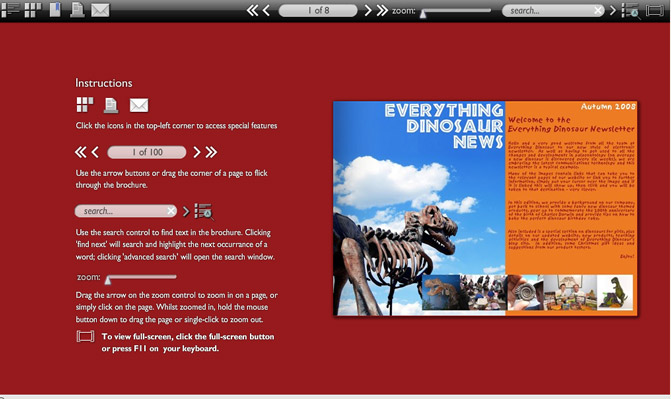The Loveable and Adorable Ammonite
Why Palaeontologists Love Ammonites
Surrounded by various dinosaur fossils such as bones, pieces of eggshell, gastroliths (stomach stones) and even some fossilised sauropod poo (coprolite), in our offices, it is easy to get carried away with dinosaurs. However, over the weekend, whilst working on some new product additions we got the chance to discuss the importance of ammonites to scientists.
Ammonites are a large group of Mesozoic cephalopods, close relatives of squid, cuttlefish and the octopus, these are the animals that lived in flat-sided, coiled, planispiral shells (most ammonites had these type of shells). Originating in the Late Silurian, most likely from more simple, straight shelled molluscs, the bactritoids these animals survived numerous mass extinction events and became one of the most abundant life forms in Mesozoic marine environments, along with their close cousins the belemnites.
The bactritoids (orthoconic shelled animals – means straight shells), originated sometime in the Devonianband persisted until the Early Triassic. As well as being considered the ancestors of the ammonites and belemnites they are believed to be the ancestors of the soft-bodied cephalopods still around today (coleoids such as squid, octopus and cuttlefish).
To see a model of a Jurassic ammonite and other extinct invertebrate replicas such as Orthoceras and an example of the Trilobita: CollectA Prehistoric Animal Models.
Ammonites diversified during the Mesozoic and there were hundreds of different species. Their shells (made of aragonite, a form of calcium carbonate), are readily preserved under the appropriate conditions and this is why we have such an extensive fossil record of this particular subclass of cephalopods.
A Typical Mesozoic Ammonite

Picture credit: Everything Dinosaur
As fossils of these creatures are very common they are important to palaeontologists and geologists as they can help identify the relative ages of different rock strata. Their diversity and rapid evolution into many forms help scientists to work out the order in which sediment strata was laid down, in this way the relative age of rocks can be calculated in relation to each other. Ammonite fossils provide a biological “key” with which palaeontologists can date the deposition of strata, in fact many layers and sequences of rocks are named after the ammonite fossils they contain. This process of using fossils to help identify the age of deposits is known as biostratigraphy. Due to the abundance of ammonite fossils and their world-wide distribution, rock sequences many thousands of miles apart can be dated using this method. The particular ammonite fossils associated with each layer of rock are called “zonal fossils”. Dinosaur fossils in contrast, do not make good zonal fossils. They are very rare, usually found as incomplete and not laid down in a marine environment only very occasionally can dinosaur remains be considered as potential zonal fossils – the Hypsilophodon bed on the Isle of Wight being a possible example.
Towards the end of the Cretaceous the ammonites as a group began to decline. The fossil record shows that there were fewer and fewer genera (although some evolved into very bizarre and ornate forms in the Late Cretaceous). The group went extinct along with the belemnites at approximately the same time as the dinosaurs. Why this particular group died out, yet the similar looking nautiloids survived is unclear. There are two species of Nautilus around today, indeed, our studies of these animals have helped fill in the gaps in our knowledge about ammonites. One theory as to why the Nautilus survived whilst the ammonites died out is that on close examination the shell of nautiloids are thicker than that of ammonites. Modern day Nautilus live in relatively deep water, ammonites seem to have been a creature of shallow seas. The thicker shells of the nautiloids are able to withstand the greater water pressure at depth.
An Example of a Nautiloid Model

CollectA Nautilus pompilius sometimes referred to as the “Emperor nautilus” because of its large size.
Picture credit: Everything Dinosaur
If the marine environment had been subjected to a prolonged period of darkness (dust in the atmosphere from a meteorite impact for example), then the photosynthesising plankton would have died off and this would have broken up the food chain. The deeper living nautiloids may have been better able to cope than the surface dependent ammonites. Also, such environmental impacts would have severely disrupted the breeding cycles and destroyed much of the larval stage populations. This too could have contributed to the ammonite extinction. In addition, if large amounts of carbon dioxide and sulphur hydroxide had been deposited in the seas, this would have led to extensive acidification of shallow, marine environments and this may have prevented the ammonites from being able to form their shells properly – again helping to reduce the population of these animals. These factors along with the rapidly evolving new Teleost fish (modern fish) which may have predated on ammonites and the competition from other cephalopods may have resulted in the extinction of this very important, and once diverse animal group.









